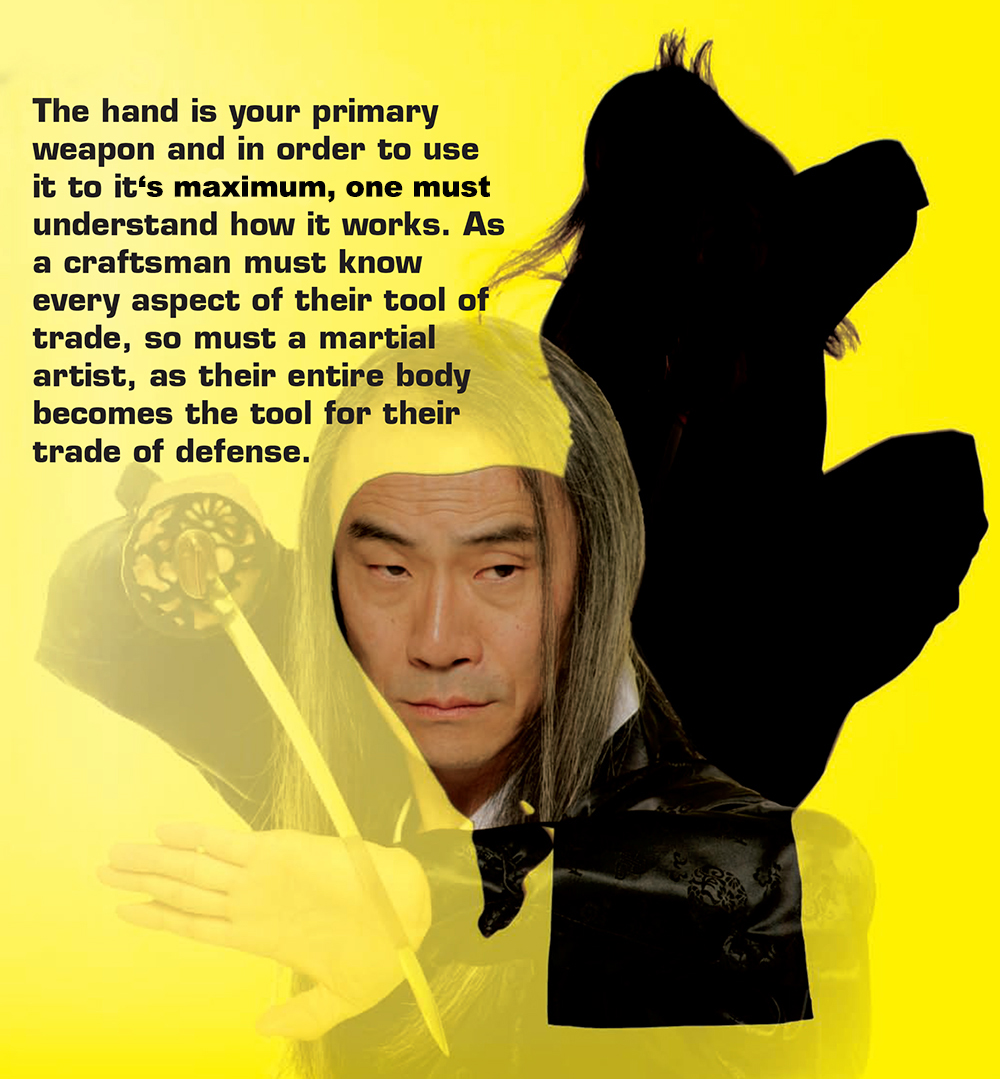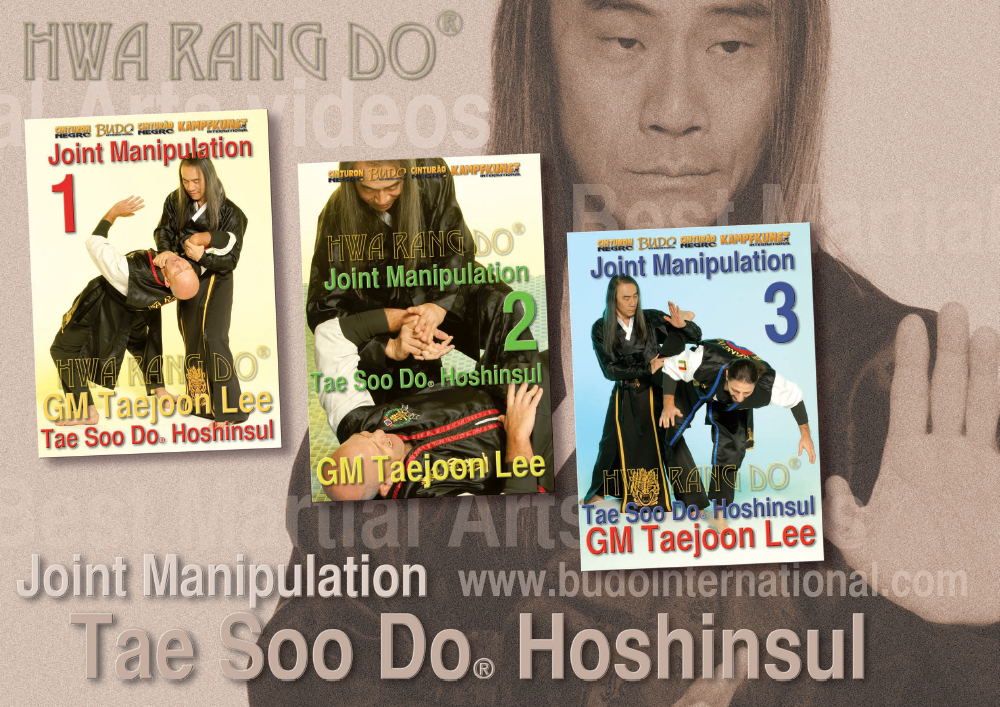lntroduction to Hwa Rang Do®’s Joint Manipulation with Tae Soo Do® Hoshinsul (Part 2)
Published in Budo International June 2019 Issue
By
Grandmaster Taejoon Lee
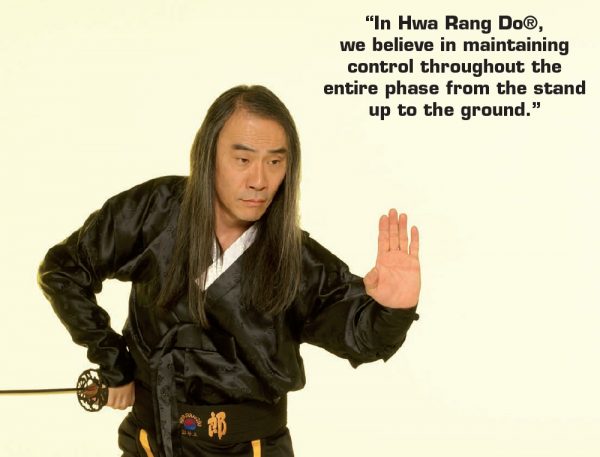
Knowing Your Primary Weapon – The Hand:
The hand is your primary weapon and in order to use it to it maximum, one must understand how it works. As a craftsman must know every aspect of their tool of trade, so must a martial artist, as their entire body becomes the tool for their trade of defense.
The last three digits of the hand are primarily for gripping whereas the index and thumb is for dexterity. As you can see by observing your hand most of the muscles lie under the pinky finger and the thumb. As it is the only function of the muscle is to contract, the index finger lies the furthest from the concentration of the musculature of the hand, this renders it useless for gripping. The index finger pointed is what we call “Ki” Extension. We believe that the index finger when pointed releases directed Ki power and this is why we use the index finger by natural means when we are pointing at objects, people, or direction. We utilize this concept when we acquire a grip with our hand on any object. By extending the index finger, the hand gains greater rigidity as well as using the index to guide the direction of force applied.
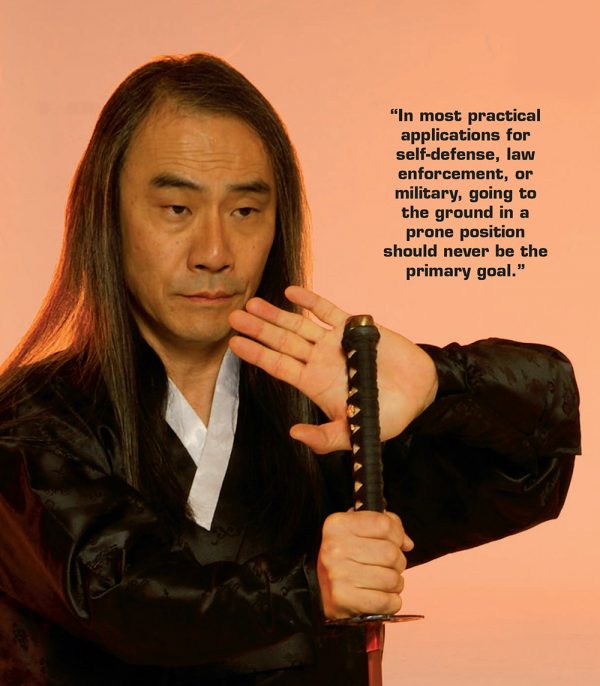
Two Types of Ground Control:
In Hwa Rang Do®, we believe in maintaining control throughout the entire phase from the stand up to the ground. Going to the ground in a prone position with the opponent is a last option scenario. Depending on the situation, it might be more prudent to remain on your feet or rather the Middle Position of going to one knee. This One Knee Position (OKP) is often used throughout Hwa Rang Do® techniques. Unlike, most other grappling arts, going to the ground in the prone position is not the primary goal. It is done only when it is necessary.
In most practical applications for self-defense, law enforcement, or military, going to the ground in a prone position should never be the primary goal. You never know when there will be others attacking empty hand or with weapons. Even though, there are ways to defend yourself and maintain your perimeter while you are on the ground that does not mean you should do it. I’ve heard a comedian once say, “…Yes, you can drive a car with your feet, but that doesn’t mean you should do it….”
- Quick Lock (Temporary Hold) – This is performed on the One Knee Position to temporarily immobilize the opponent with pressure points, joint locks, neck-cranks, and chokes to either finish with a strike, joint dislocation, or a submission hold. Often, this position is enough to control the opponent, ending the fight. However, if this position is compromised, then it is already set up to go to ground in an advantage position for a successful submission.
- Submission (Finish Hold) – The Submission Hold is when you lock up the opponent in a hold, which the opponent cannot escape and must submit in order to be released. Most often this means both you and the opponent are on the ground in a prone position.
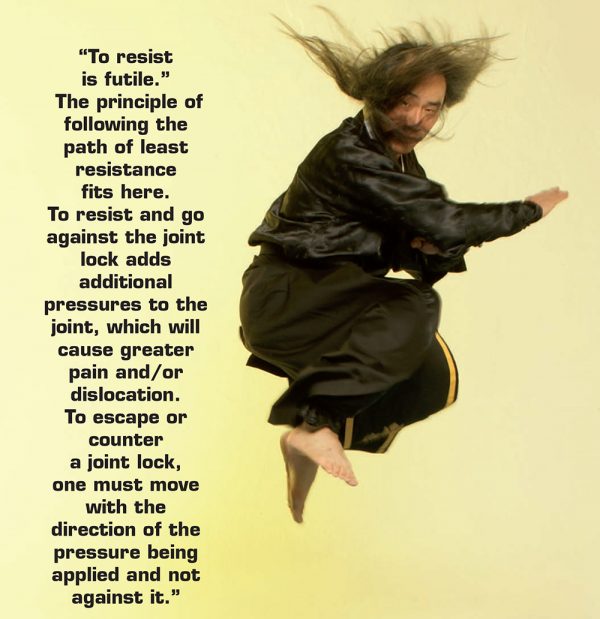
Escaping or Countering Joint Locks:
“To resist is futile.” The principle of following the path of least resistance fits here. To resist and go against the joint lock adds additional pressures to the joint, which will cause greater pain and/or dislocation. To escape or counter a joint lock, one must move with the direction of the pressure being applied and not against it. This is against our normal response to pain. We automatically, using the reflex arc, respond in opposition to the source of the pain. We must train ourselves to respond by moving into the technique and not away.
I want to make an additional point on the principle – “Following the path of least resistance.” This might be sometimes true in the application of physical techniques in regards to martial arts, but it is not applicable to moral philosophy as Hwarang Warriors. When applied to philosophy as a guide to live one’s life, we must add another phrase to make it viable for a warrior.
“Following the path of least resistance is what makes rivers and men crooked.”
Anonymous
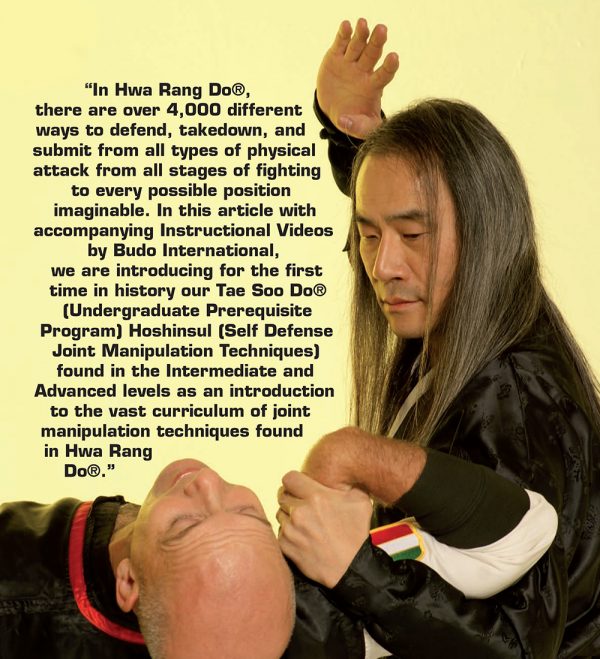
The Techniques & Conclusion:
In Hwa Rang Do®, there are over 4,000 different ways to defend, takedown, and submit from all types of physical attack from all stages of fighting to every possible position imaginable. In this article with accompanying Instructional Videos by Budo International, we are introducing for the first time in history our Tae Soo Do® (Undergraduate Prerequisite Program) Hoshinsul (Self Defense Joint Manipulation Techniques) found in the Intermediate and Advanced levels as an introduction to the vast curriculum of joint manipulation techniques found in Hwa Rang Do®.
Lastly, I want to emphasize that you exercise tremendous caution if you have practiced very little or never done joint-manipulation before. You must gain a good sense of your body and know what the joint-locks feel like in order to control the level of force you must apply without causing injury to your partner. It is essential that you have the techniques done to you first so you can know the limitations of your own body, feeling the pain, and thus gaining empathy for your partner so that you can practice self-control when applying them.
Conducting countless seminars, I have ran across many Black Belts of striking arts who always ask the question, “Wow that really hurts. How do you know how much pressure to apply before you dislocate the joint?” My standard answer is, “I have never dislocated a joint or broken a bone that I did not intend on breaking. Much practice…”
For beginners, I hope it has stirred some serious interest to the world of joint-manipulation, joint-locks and for experienced joint-manipulators, I hope that there was additional insights in the application and execution of the techniques.
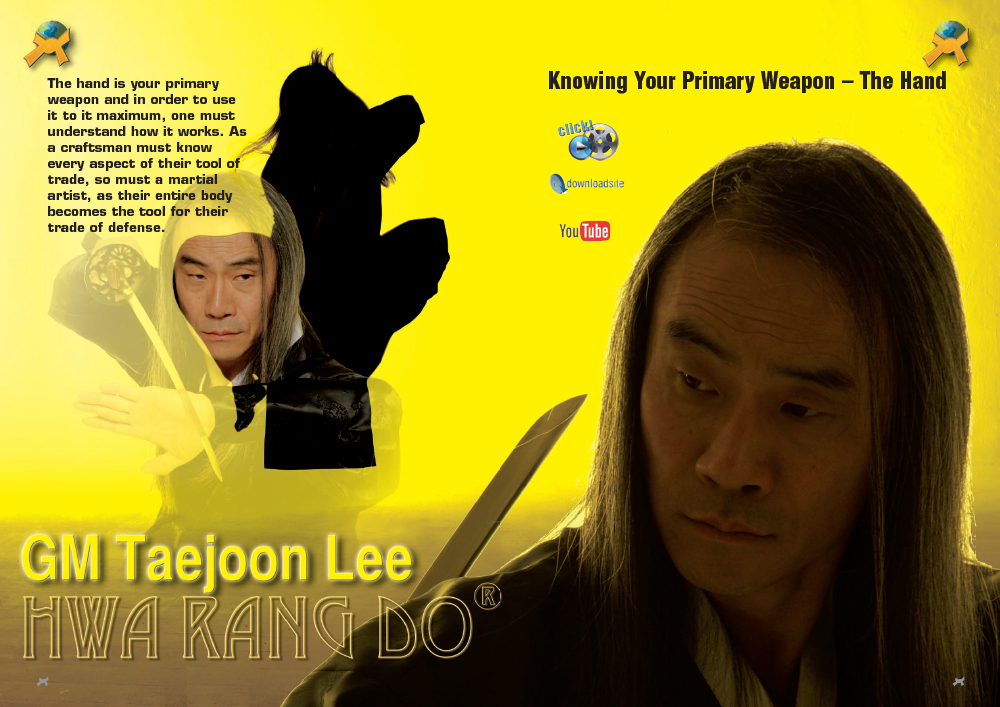
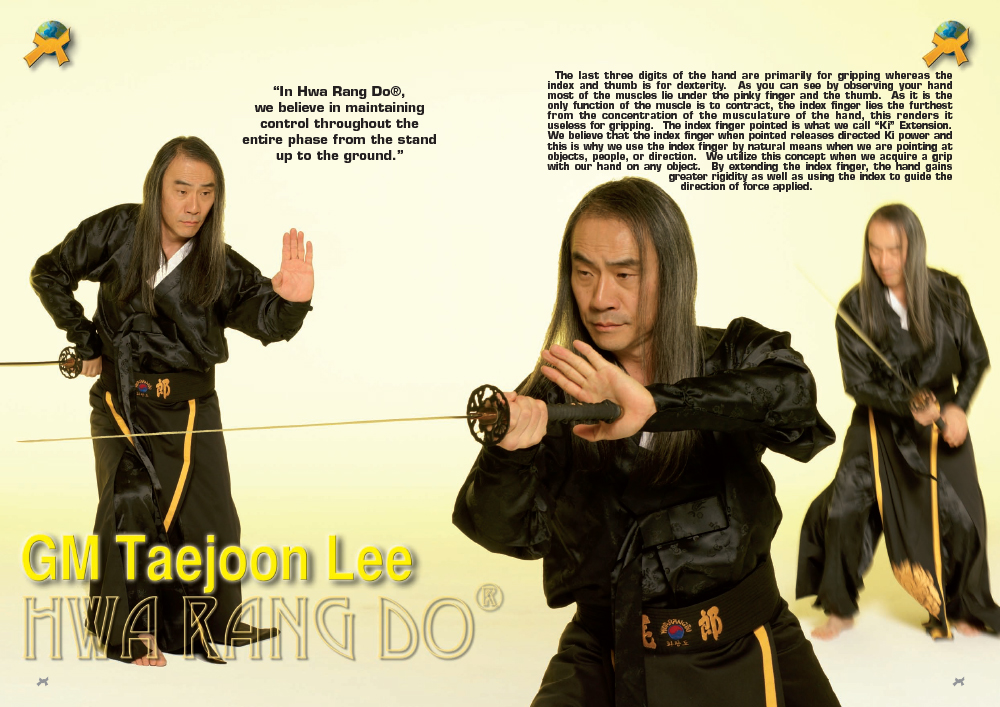
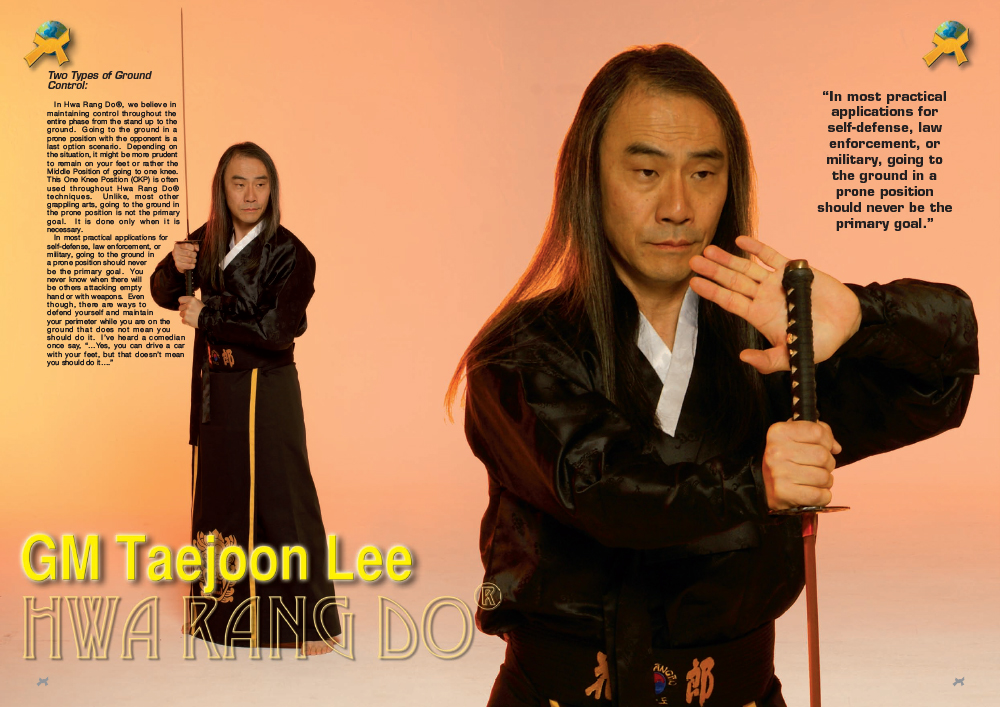
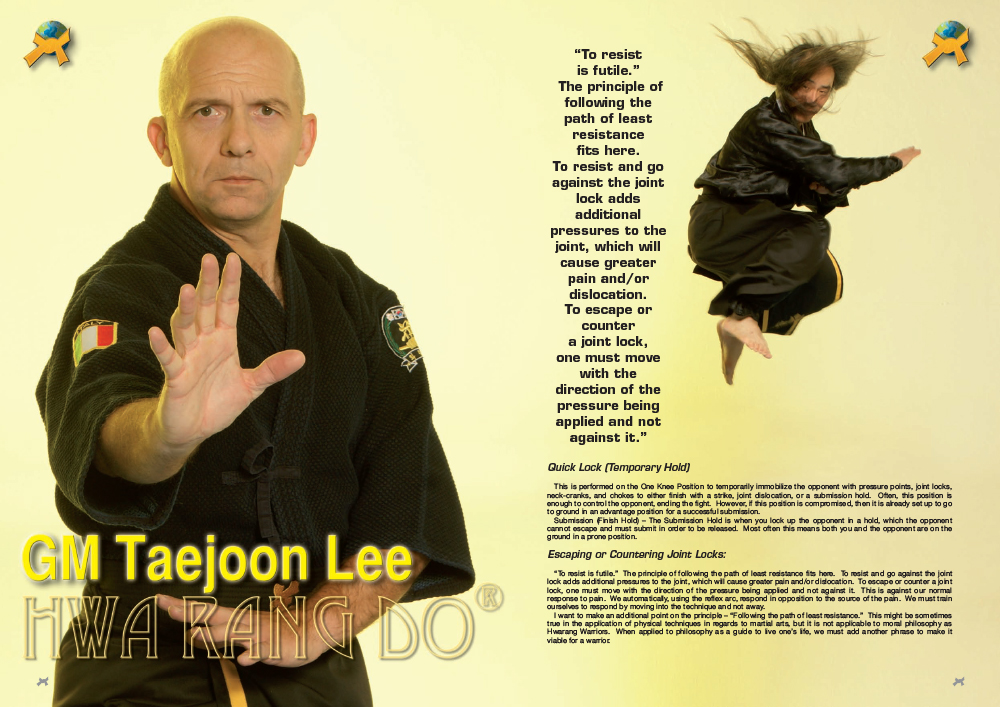
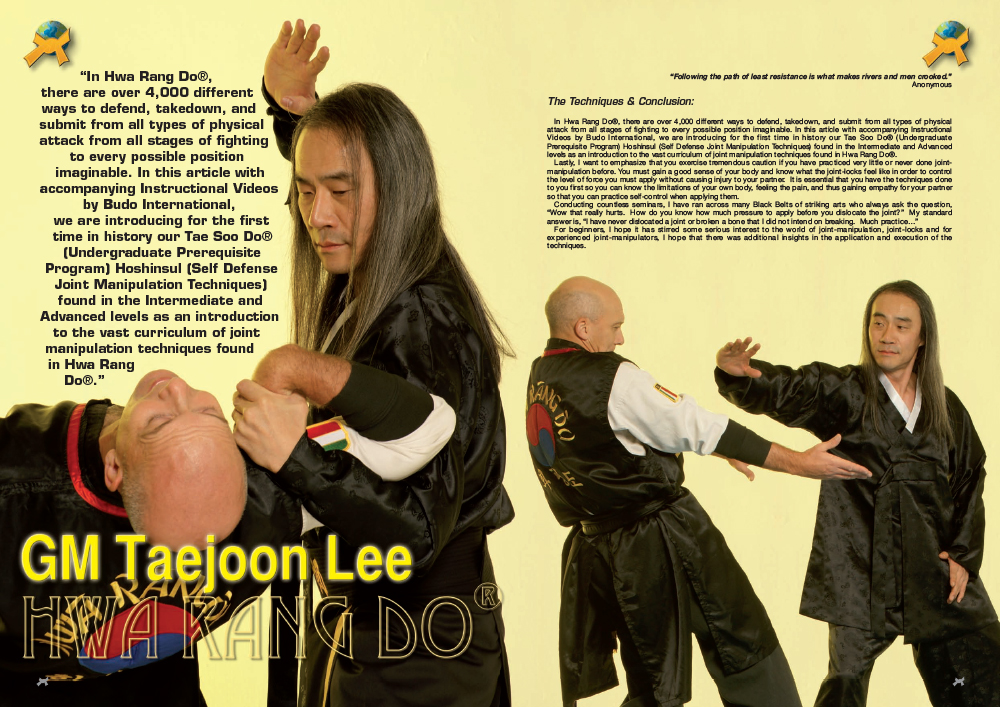
Tae Soo Do Hoshinsul – Joint Manipulation Vol. 1 Download
Tae Soo Do Hoshinsul – Joint Manipulation Vol. 2 Download

